Il sistema AVB di MOTU diventa protagonista dell’ultimo progetto di uno dei maestri della musica sperimentale: Brian Eno.
Un’installazione davvero futuristica a Berlino, pensata da Brian Eno e Peter Chilvers, eccola presentata da CDM
The Hexadome is the new entry, launching this week. What makes it unique is that it couples visuals and sound in a single installation that will tour. Then it will make a round trip back to Berlin where the long-term plan is to establish a permanent home for this kind of work. It’s the first project of an organization dubbing itself the Institute for Sound and Music, Berlin – with the hope that name will someday grace a permanent museum dedicated to “sound, immersive arts, and electronic music culture.”
For now, ISM just has the Hexadome, so it’s parked in the large atrium of the Martin Gropius Bau, a respected museum in the heart of town.

MOTU è protagonista di questa installazione innovativa, grazie alle possibilità di AVB, che permette di connettere e gestire più interfacce.
Hexadome technology
The two halves of the Hexadome describe what this is – it’s a hexagonal projection arrangement, plus a dome-shaped sound array.
I spoke to Holger Stenschke, Lead Support Technician, from ZKM Karlsruhe, as well as Toby Götz, director of the Pfadfinderei collective. (Toby doubles up here, as the designer of the visual installation, and as one of the visual artists.) So they filled me in both on technical details and the intention of the whole thing.
Projection. The visuals are the simpler part to describe. You get six square projection screens, arranged in a hexagon, with large gaps in between. These are driven by two new iMacs Pro – that’s the current top-of-range from Apple as we launch – supplemented by still more external GPUs connected via Thunderbolt. MadMapper runs on the iMacs, and then the artists are free to fill all those pixels as needed. (Each screen is a little less than 4K resolution – so multiply that by six. Some shows will actually require both iMacs Pro.)
Sound. In the hemispherical sound array, there are 52 Meyer Sound speakers, arranged on a frame that looks a bit like a playground jungle gym. Why 52? Well, they’re arranged into a triangular tesselation around the dome. That’s not just to make this look impressive – that means that the sound dispersal from the speakers line up in such a way that you cover the space with sound.
The speakers also vary in size. There are three subwoofers, spaced around the hexagonal periphery, bigger speakers with more bass toward the bottom, and smaller, lighter speakers overhead. In Karlsruhe, where ZKM has a permanent installation, more of the individual speakers are bigger. But the Hexadome is meant to be portable, so weight counts. I can also attest from long hours experimenting on 4DSOUND that for whatever reason, lower frequency sounds seem to make more sense to the ears closer to the ground, and higher frequency sounds overhead. There’s actually no obvious reason for this – researchers I’ve heard who investigated how we localize sound find there’s no significant difference in how well we can localize across frequency range. (Ever heard people claim it doesn’t matter where you put a subwoofer? They’re flat out wrong.) So it’s more an expectation of experience than anything else, presumably. (Any psychoacoustics researchers wanting to chime in on comments, feel free.)
For comparison: there are other installations of this type. Dolby Atmos uses a similar configuration for movie theaters – 64 separately-addressable speakers – but with Dolby’s proprietary processing software controlling it, and only in full Atmos cinemas. (And as with past Dolby tech, this gets bundled together with other tech, like mobile, that lacks that full speaker configuration.) See Dolby’s own explanation of what that’s about. The principle is the same, though: by using more channels and sending them more precisely to individual speakers, with some maths done behind the scene to pan the sound across 3D space and process it accordingly, your ears are able to perceive more details in space. (And your ears, by the way, are very, very good at this, whether trained or not.)
The speaker array – three subs shown in yellow in approximate positions, and then a massive skeleton hemisphere covered with smaller speakers, all from Meyer Sound. MOTU 24Ao interfaces, connected via AVB and Ethernet, pull everything together.
Audio interfaces. MOTU are all over this rig, because of AVB. AVB is the standard (IEEE, no less) for pro audio networking, letting you run sound over Ethernet connections. AVB audio interfaces from MOTU are there to connect to an AVB network that drives all those individual speakers. There are some six MOTU 24Ao interfaces in play connecting that huge array.
Sound spatialization software. Visualists here are pretty much on their own – your job is to fill up those screens. But on the auditory side, there’s actually some powerful and reasonably easy to understand software to guide the process of positioning sound in space.
It’s actually significant that the Hexadome isn’t proprietary. Whereas the 4DSOUND system uses its own bespoke software and various Max patches, the Hexadome is built on some standard tools.
Artists have a choice between IRCAM’s Panoramix and Spat, and ZKM’s Zirkonium.
Full Article: http://cdm.link/2018/03/inside-a-new-immersive-av-system-as-brian-eno-premieres-it-in-berlin/
Per vedere l’installazione: https://www.berlinerfestspiele.de/en/aktuell/festivals/gropiusbau/programm_mgb/gropius_bau_ausstellungen/gropius_bau_18_hexadome/ausstellung_ism_hexadome/ausstellung_hexadome_237338.php
Scopri l’intero catalogo MOTU: CLICCA QUI



